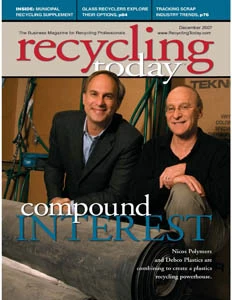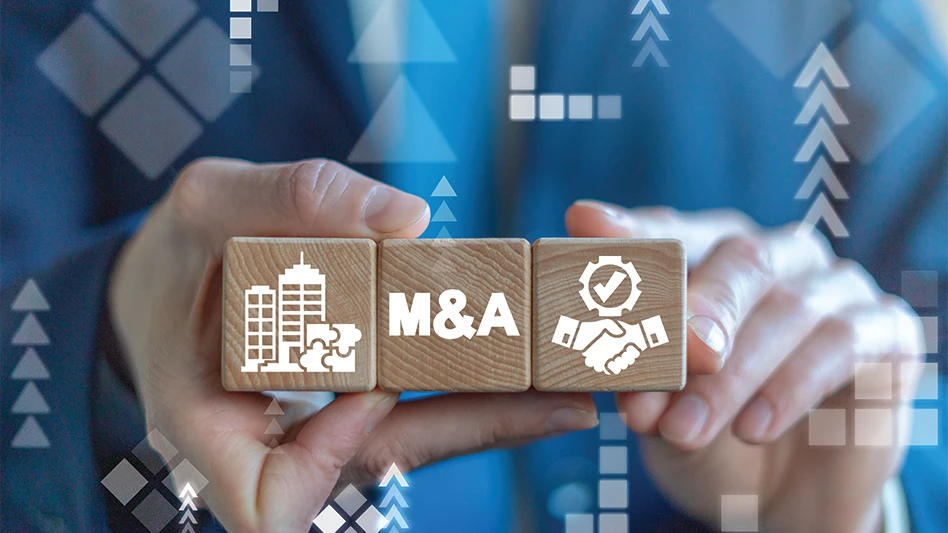Four years ago, I authored an article for Recycling Today titled "Preventive Medicine" about auditing electronics recyclers. (The feature is available at the Recycling Today Web site at www.recyclingtoday.com/articles/article.asp?ID=4798&AdKeyword=%22preventive+medicine%22.) The article provides a tutorial on how to properly audit an electronics recycler.
My inspiration for the article came from years of hosting scores of generator audits at electronics recycling facilities around the United States.
The good news was that the electronics recyclers always passed the audits. The bad news was that the e-recyclers always passed the audits.
Why?
Most of the audits were traditional environmental, health and safety audits and did not include critical elements for qualifying an electronics recycler. Key factors that would reveal whether hazardous scrap materials were being exported to developing countries were completely overlooked.
Fast forward four years. Although the United States still has no federal standards for electronics recycling, generators, particularly OEMs (original equipment manufacturers), have made significant strides in their efforts to effectively qualify their electronics recyclers to assure proper management throughout the end-of-life cycle. What is driving this progress and where do we need to go from here?
EXIT NEPSIIn early 2004 The National Electronics Product Stewardship Initiative (NEPSI) became the poster child for failed efforts to establish a national electronics recycling system when the U.S. Environmental Protection Agency cut off funding for the project and major OEMs could not agree on a financing mechanism to pay for the recycling.
However, tremendous work was accomplished in identifying what responsible electronics recycling should entail and what would have been required of recyclers wishing to process material collected through the NEPSI program.
Even though the process "failed," the large number of stakeholders and other NEPSI participants, armed with information, took the guidelines they developed to their own organizations and incorporated them into RFPs (request for proposals) for electronics recycling services. Moreover, they began looking for compliance with those standards when conducting audits.
ENTER EPEATIf NEPSI became the symbol of failure, EPEAT (Electronic Product Environmental Assessment Tool) has the potential to become the symbol of success in a federal environmental initiative involving electronic product stewardship.
EPEAT, modeled after the U.S. EPA Energy Star program, identifies electronic products with superior environmental performance from the manufacturing stage through the product’s useful life onto its disposition. To date, more than $42 billion in government and private sector RFPs have been issued citing preference for EPEAT products. This has provided tremendous incentive for OEMs to develop products that meet EPEAT criteria.
One of the product attributes an OEM can claim to attain the highest EPEAT status (Gold) is to have a legitimate recycling program in place for its product. But, to get credit for this attribute, the OEM must conduct annual audits of all first-, second- and third-tier recyclers. Ah, downstream due diligence!
But, is it really downstream due diligence?
After all these years, I am fortunate to still be working with recyclers, but now they are suppliers to my company, providing MaSeR with scrap materials for final recovery through a unique process that provides a competitive alternative to export. As such, MaSeR is often a second-tier recycler that is subject to audits by generators looking to evaluate an electronics recycler’s entire downstream to qualify that responsible recycling is taking place. Armed with audit criteria, such as what has been laid down by NEPSI and EPEAT, these auditors are asking more of the right questions more frequently, but not all of the right questions.
Here is what’s missing: Recently, MaSeR was audited by a consultant representing a major OEM. This was perhaps one of the most rigorous EH&S and recycling audits we’d ever been subject to.
After the audit was complete, the consultant joined us for lunch, and I complimented him on his thoroughness. Then I asked him if he wanted me to tell him a critical element that he missed.
"Certainly. What do you think I missed?" he asked.
"You know how you asked for a list of all our downstream markets, and I gave that to you, and we went over all of them?" I queried.
"Yes," he replied.
"Well, you never asked me for proof," I responded.
He and I then discussed how, without reviewing the actual shipping documents and accounting records showing that we were, in fact, shipping material to those markets, he had no way of knowing if we were actually doing what we said we were doing.
WARNING TO AUDITORSIn my 2003 article, I warned generators not to be swayed into thinking everything with a recycler was O.K. just because they got "certificates" of recycling, which anyone can produce on a printer. Without due diligence, the certificate means nothing.
Now, as generators and auditors are more frequently conducting due diligence, some not-so-honest electronics recyclers have come up with other ways of creating smoke and mirrors to prevent from revealing how they are really managing material.
Among the smokescreens du jour are fabricated bills of lading (BOL) and accounting records. Many of these forms can be purchased at any office supply store and printed to say anything. So, a recycler, for example, could produce a BOL and/or bill of sale saying all its scrap is going to MaSeR and, instead, load up export containers and ship it all overseas.
Fortunately, qualifying the downstream vendors is very easy. All it takes are a few phone calls to the vendors identified on the BOLs to verify that they actually do receive material from that recycler. And, don’t forget to qualify the volume of material the recycler claims to be shipping to a particular vendor.
Although more generators now understand the importance of an on-site audit, some believe that if a recycler has been audited at all, then they are somehow sanctioned or "approved."
A good example of this is facilities that have been audited by an organization called CHWMEG Inc. CHWMEG is a trade association that conducts independent reviews of commercial "waste" facilities in an effort to help members manage the myriad of facility audits that are required every year. Each year, members select the facilities they need to audit, and independent environmental firms perform the audits. The results are then made available to members who must determine whether or not the operation meets their own corporate standards.
CHWMEG and other independent auditors do not "approve" scrap processing facilities; they provide generators with information so they can approve or reject a facility.
IN THE FUTUREFor nearly the past two years, the U.S. EPA has been convening meetings of a group of stakeholders to establish nationally recognized voluntary standards for recycling electronics. These responsible recycling ("R2") practices will be used in accredited certification programs that assess electronics recyclers’ environmental, health and safety and security practices.
Certification to these standards will provide generators with a simple means of verifying that an electronics recycling company is forthright and responsible about how it manages used and end-of-life electronic equipment. At the same time, responsible electronics recyclers will finally have a means of highlighting their values and performance to customers.
Although final consensus has not yet been reached on all issues, the stakeholders agree that the document must be field-tested prior to finalizing. This is expected to begin in the fourth quarter of 2007.
In the meantime, generators of electronic scrap can assure their recycling program meets their own standards by:
• Visiting the primary facility and, if possible, secondary and tertiary facilities (If on-site visits are too onerous, telephone and documentation audits can be very effective, as long as the right information is requested.);
• Conducting thorough business, environmental, health, safety and security audits;
• Mapping downstream processors and verifying their processes and compliance;
• Getting proof by reviewing bills of lading and accounting records as evidence that materials are going where the recycler says they are going and calling the downstream vendors to verify the relationships and volumes; and
• Re-auditing annually.
By following these simple steps, companies can be assured that their electronics are being recycled in an environmentally and socially responsible way.
The author is executive vice president of MaSeR Corp., Barrie, Ontario, and can be reached at lroman@masercorp.com.

Explore the December 2007 Issue
Check out more from this issue and find your next story to read.
Latest from Recycling Today
- Magnomer joins Canada Plastics Pact
- Electra names new CFO
- WM of Pennsylvania awarded RNG vehicle funding
- Nucor receives West Virginia funding assist
- Ferrous market ends 2024 in familiar rut
- Aqua Metals secures $1.5M loan, reports operational strides
- AF&PA urges veto of NY bill
- Aluminum Association includes recycling among 2025 policy priorities





